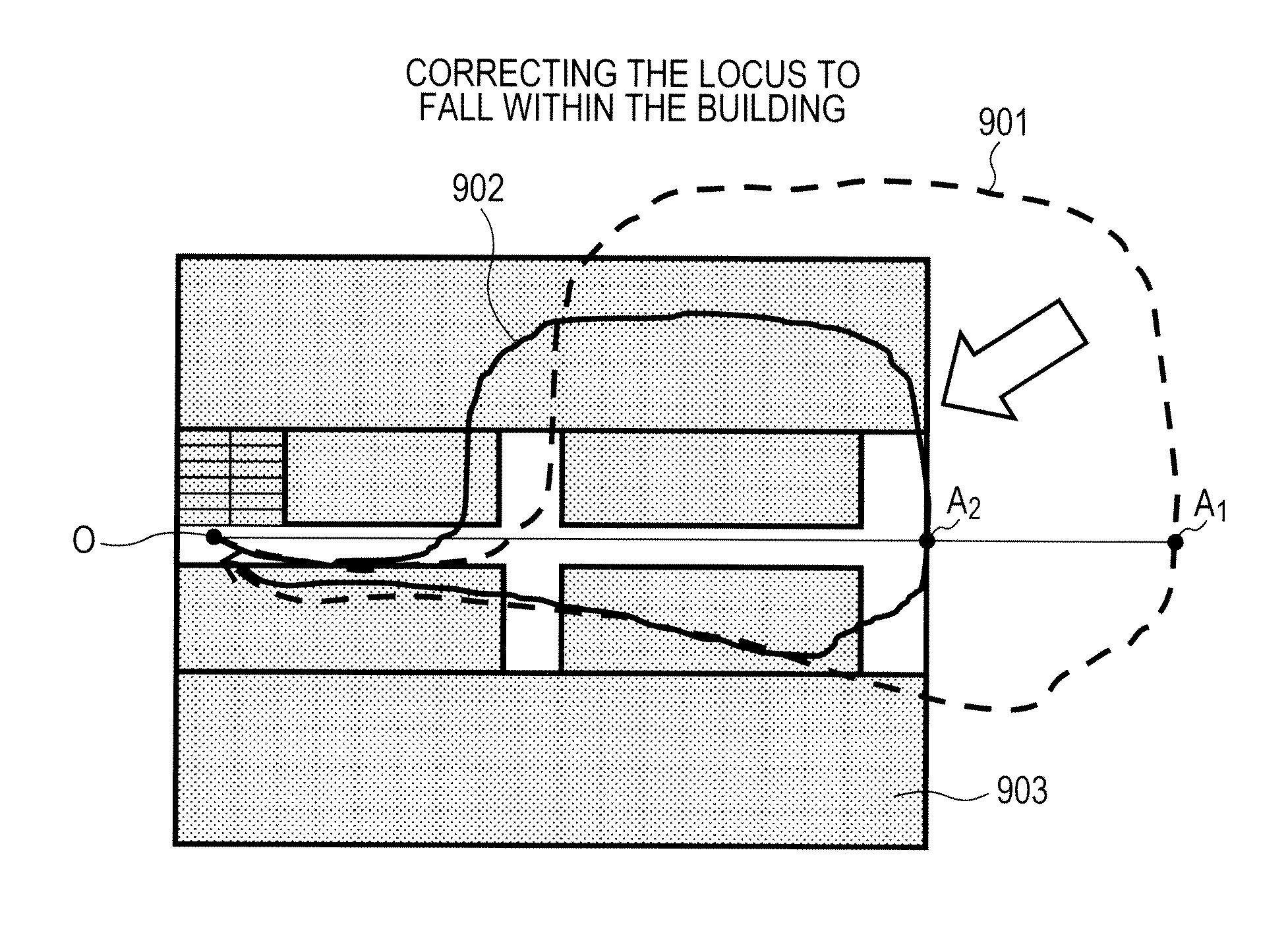Information processing apparatus and information processing method
- Summary
- Abstract
- Description
- Claims
- Application Information
AI Technical Summary
Benefits of technology
Problems solved by technology
Method used
Image
Examples
first embodiment
(1) First Embodiment
[0040]In a first embodiment, it is presumed that a time instant when a walker entered a coverage floor and a time instant when the walker exited the floor are known and the coordinates of a starting point (an entrance of the coverage floor such as a door, stairway, and elevator) and an end point (an exit of the coverage floor such as a door, stairway, and elevator) are known or given by a user. In the first embodiment, values assigned to a plurality of drift components are prepared in advance. By varying the values of these drift components, a process creates a plurality of walking loci (which are of the same distance, but have different forms, because an absolute orientation is not defined in the first embodiment). The thus created walking loci are evaluated using the coordinate values of their starting point and end point. Based on the evaluation, an optimal walking locus is determined.
[0041]FIG. 1 is a diagram showing an example of a schematic structure of an ...
second embodiment
(2) Second Embodiment
[0058]In a second embodiment, calculating walking directions is executed taking account of orientation data, in addition to the structure and process of the first embodiment.
[0059]FIG. 3 is a diagram showing an example of a schematic structure of an information processing apparatus (also referred to as a walking locus inference apparatus) 300 according to the second embodiment. Like the information processing apparatus 100, the information processing apparatus 300 includes an acceleration sensor 101, a gyro sensor 102, an acceleration sensor data storage unit (memory) 103, a gyro sensor data storage unit (memory) 104, a walk speed analysis unit 105, a drift component input unit 106, a relative azimuth calculation unit 107, a walking direction calculation unit 303, a walking locus creation unit 109, a walking locus evaluation unit 110, and an optimal walking locus determination unit 111 and, besides, includes an orientation sensor (compass) 301 and an orientation...
third embodiment
(3) Third Embodiment
[0062]In a third embodiment, walking loci are adjusted and evaluated using building data (including information on a building outline and floor access points such as stairways and elevators.
[0063]FIG. 4 is a diagram showing an example of a schematic structure of an information processing apparatus (walking locus inference apparatus) 400 according to the third embodiment. The information processing apparatus 400 includes a building data storage unit 401 in addition to the structure of the information processing apparatus 100. Because processing is performed using building data, the operations of a walking locus creation unit 402, a walking locus evaluation unit 403, and an optimal walking locus determination unit 404 differ from those in the first embodiment.
[0064]The building data storage unit 401 stores information on the outline of at least one building, floor access points (stairways, elevators, etc.) inside the building, and its internal structure (in-buildin...
PUM
 Login to View More
Login to View More Abstract
Description
Claims
Application Information
 Login to View More
Login to View More - R&D
- Intellectual Property
- Life Sciences
- Materials
- Tech Scout
- Unparalleled Data Quality
- Higher Quality Content
- 60% Fewer Hallucinations
Browse by: Latest US Patents, China's latest patents, Technical Efficacy Thesaurus, Application Domain, Technology Topic, Popular Technical Reports.
© 2025 PatSnap. All rights reserved.Legal|Privacy policy|Modern Slavery Act Transparency Statement|Sitemap|About US| Contact US: help@patsnap.com



